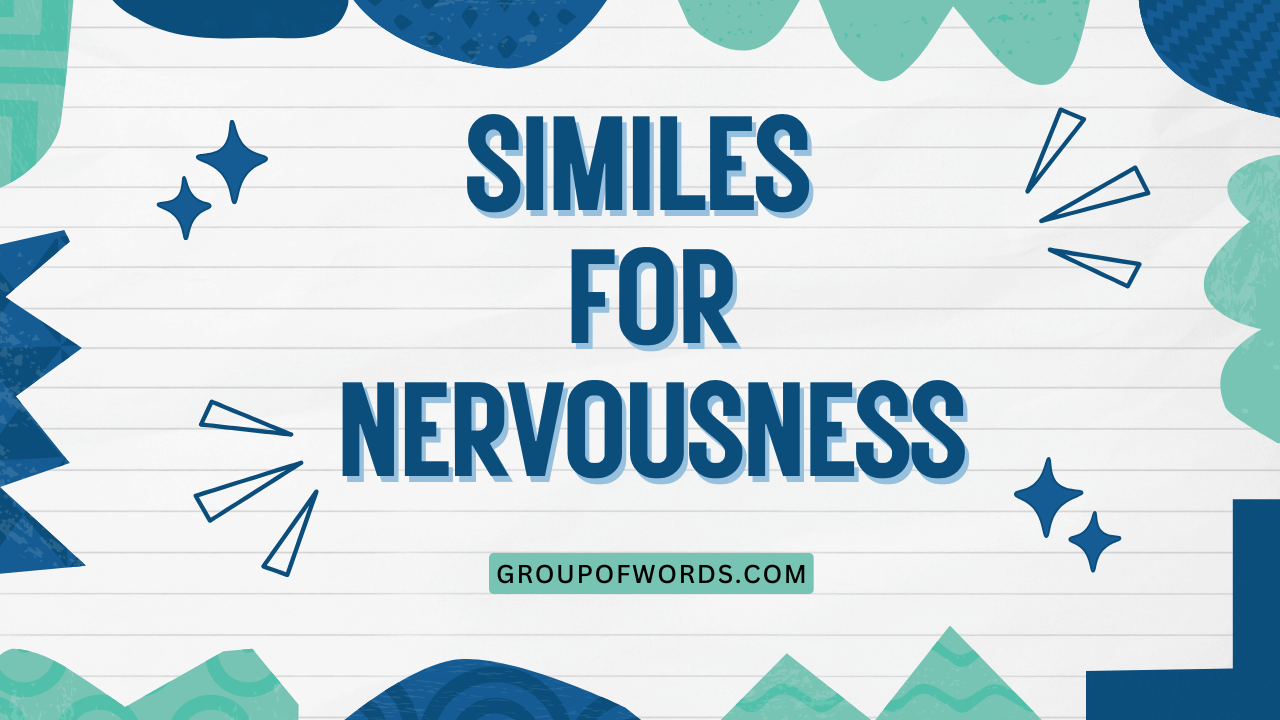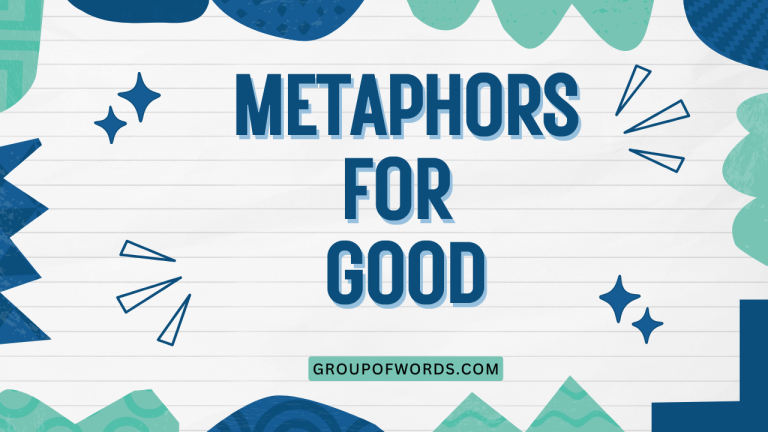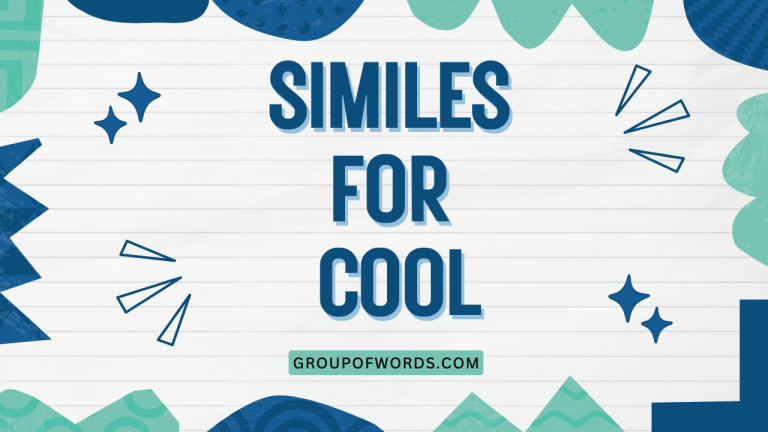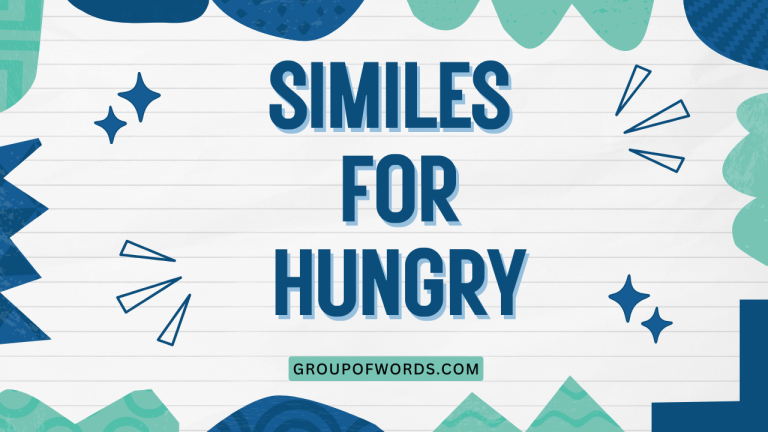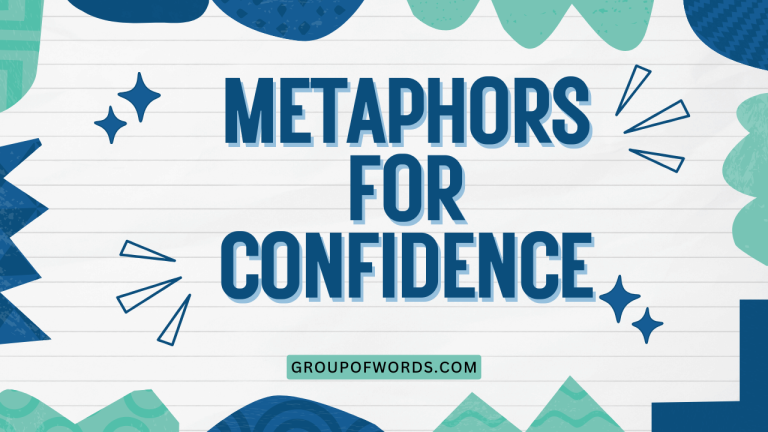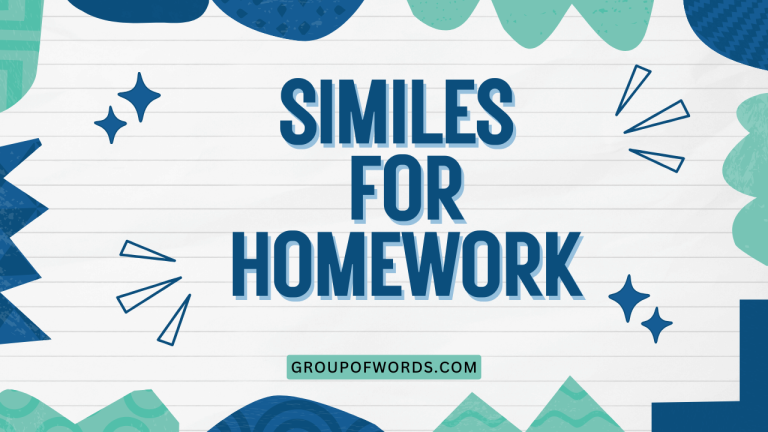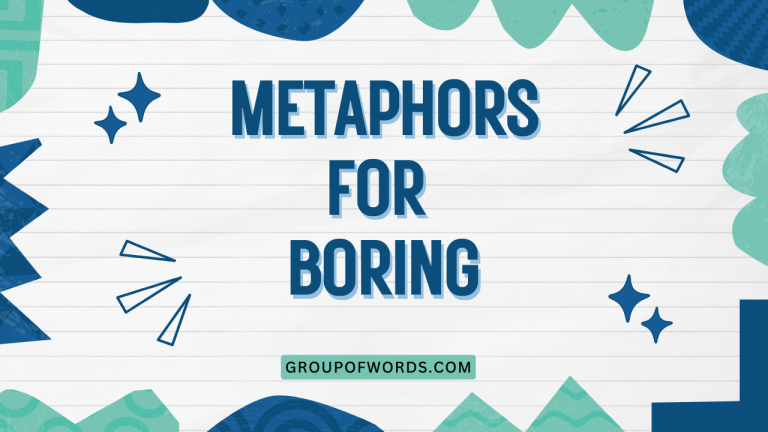Similes for Nervousness: A Comprehensive Guide
Nervousness is a common human emotion, and expressing it vividly can add depth and color to our writing and speech. Similes, with their ability to draw comparisons, are particularly effective in conveying the feeling of being nervous.
Understanding how to use similes for nervousness not only enhances your descriptive skills but also enriches your understanding of figurative language. This article explores the nuances of using similes to describe nervousness, providing numerous examples, usage rules, and practice exercises.
Whether you’re a student, writer, or simply someone looking to improve your communication skills, this guide will equip you with the tools to express nervousness in a creative and impactful way.
This guide is designed to provide a comprehensive understanding of similes for nervousness, covering everything from basic definitions to advanced usage. By the end of this article, you’ll be able to identify, understand, and effectively use similes to describe nervousness in various contexts.
Whether you’re preparing for an exam, writing a novel, or simply trying to articulate your feelings, this guide will help you express yourself with greater clarity and precision.
Table of Contents
- Definition of Similes for Nervousness
- Structural Breakdown of Similes
- Types of Similes for Nervousness
- Examples of Similes for Nervousness
- Usage Rules for Similes
- Common Mistakes When Using Similes
- Practice Exercises
- Advanced Topics: Metaphors and Personification
- Frequently Asked Questions
- Conclusion
Definition of Similes for Nervousness
A simile is a figure of speech that compares two unlike things using the words “like” or “as.” In the context of describing nervousness, a simile draws a comparison between the feeling of nervousness and something else that evokes a similar sensation or image. This allows for a more vivid and relatable depiction of the emotion.
Similes are a powerful tool for writers to evoke a specific feeling or image in the reader’s mind. They help to translate abstract emotions into concrete, understandable terms.
For example, saying “He was as nervous as a long-tailed cat in a room full of rocking chairs” uses a simile to convey the character’s nervousness. The image of the cat in a precarious situation immediately communicates a sense of anxiety and unease.
This is more impactful than simply saying “He was nervous.” Understanding the function of similes is crucial for effective communication, particularly when dealing with nuanced emotions like nervousness.
Structural Breakdown of Similes
Similes typically consist of three main components: the subject (the thing being described), the linking word (“like” or “as”), and the object of comparison (the thing to which the subject is being compared). Understanding this structure is key to creating effective and meaningful similes.
The linking word is what explicitly signals the comparison, making it clear that the two things are being equated in some way.
Here’s a breakdown:
- Subject: The person or thing experiencing nervousness (e.g., “She,” “His hands”).
- Linking Word: “Like” or “as.”
- Object of Comparison: Something that evokes a similar feeling or image of nervousness (e.g., “a leaf in the wind,” “ice”).
For instance, in the simile “He was as pale as a ghost,” “He” is the subject, “as” is the linking word, and “a ghost” is the object of comparison. The effectiveness of a simile depends on the relevance and clarity of the comparison.
A good simile should create a vivid mental image and resonate with the reader’s experience.
Types of Similes for Nervousness
Similes for nervousness can be categorized based on what aspect of nervousness they emphasize. Here are a few common categories:
Similes Describing Physical Sensations
These similes focus on the physical manifestations of nervousness, such as sweating, trembling, or a racing heart. These types of similes help the reader understand nervousness not just as a feeling, but as a bodily experience.
Similes Describing Mental State
These similes highlight the mental aspects of nervousness, such as anxiety, fear, or a lack of focus. These similes convey the internal turmoil and cognitive effects of nervousness.
Similes Describing Behavioral Patterns
These similes illustrate how nervousness affects a person’s behavior, such as fidgeting, pacing, or being unable to speak clearly. By focusing on behavior, these similes show how nervousness manifests outwardly.
Examples of Similes for Nervousness
The following tables provide a variety of similes for nervousness, categorized by the aspect of nervousness they describe. Each table includes numerous examples to illustrate the different ways similes can be used to convey this emotion effectively.
Similes Describing Physical Sensations
This table presents similes that focus on the physical manifestations of nervousness, such as sweating, trembling, and a racing heart. These examples help readers understand nervousness as a bodily experience that extends beyond just a feeling.
| Simile | Explanation |
|---|---|
| His hands were shaking like leaves in a storm. | Emphasizes the uncontrollable trembling caused by nervousness. |
| She was sweating like a marathon runner at the finish line. | Highlights the excessive sweating associated with intense anxiety. |
| His heart was pounding like a drum solo. | Conveys the rapid and forceful heartbeat experienced when nervous. |
| Her stomach was churning like a washing machine. | Describes the uneasy and unsettled feeling in the stomach. |
| He felt as cold as ice despite the warm room. | Illustrates the chilling sensation that can accompany nervousness. |
| Her knees felt like jelly. | Describes the weakness and instability in the legs due to nervousness. |
| His mouth was as dry as the Sahara Desert. | Highlights the lack of saliva and difficulty swallowing when nervous. |
| She was trembling like an earthquake victim. | Conveys a strong and uncontrollable physical shaking. |
| His skin prickled like he was covered in ants. | Describes the sensation of goosebumps or crawling skin. |
| Her breath was as shallow as a sleeping bird’s. | Illustrates the rapid and shallow breathing associated with anxiety. |
| He felt as though his blood had turned to ice water. | Emphasizes the chilling, paralyzing effect of extreme nervousness. |
| She was as stiff as a board, unable to move. | Highlights the physical tension and immobility caused by fear. |
| His voice cracked like a teenager’s during puberty. | Describes the unsteady and unpredictable quality of a nervous voice. |
| Her face was as red as a beet. | Illustrates the blushing and flushing of the skin due to embarrassment. |
| He felt like his insides were tied in knots. | Conveys the feeling of tension and unease within the body. |
| She was breathing as heavily as a winded athlete. | Highlights the labored breathing resulting from panic. |
| His palms were as slippery as eels. | Describes the sweaty and clammy hands associated with nervousness. |
| Her vision was blurring like she was underwater. | Illustrates the disorienting effect of anxiety on perception. |
| He felt as lightheaded as if he hadn’t eaten in days. | Conveys the feeling of dizziness and weakness. |
| She felt a shiver run down her spine like a cold breeze. | Describes the sudden, involuntary physical reaction to fear. |
| His legs felt like lead, heavy and difficult to move. | Emphasizes the feeling of heaviness and fatigue in the legs. |
| She felt her throat tighten like a noose. | Illustrates the feeling of constriction and difficulty swallowing. |
| His teeth were chattering like he was standing in the snow. | Conveys the uncontrollable shivering caused by intense fear. |
| She was as pale as a sheet, drained of all color. | Highlights the loss of color in the face due to shock or fear. |
| His stomach dropped like he was on a rollercoaster. | Describes the sudden, sinking feeling of dread. |
| She felt her pulse racing like a hummingbird’s wings. | Conveys the rapid and erratic heartbeat experienced when anxious. |
Similes Describing Mental State
This table focuses on similes that describe the mental aspect of nervousness, such as anxiety, fear, and confusion. These examples help readers understand the internal turmoil and cognitive effects of nervousness.
| Simile | Explanation |
|---|---|
| Her mind was racing like a runaway train. | Emphasizes the uncontrollable and rapid thoughts caused by anxiety. |
| He felt as lost as a child in a crowded city. | Highlights the sense of disorientation and confusion when nervous. |
| Her thoughts were jumbled like a mixed-up puzzle. | Describes the lack of clarity and coherence in thinking. |
| He felt like he was walking through a fog, unable to see clearly. | Illustrates the mental cloudiness and lack of focus. |
| Her memory was as blank as a whiteboard. | Conveys the inability to recall information due to nervousness. |
| He felt as though his brain had turned to mush. | Describes the feeling of mental fatigue and inability to think clearly. |
| Her mind was buzzing like a beehive. | Highlights the constant and overwhelming mental activity. |
| He felt as trapped as a fly in a spiderweb. | Illustrates the feeling of being stuck and unable to escape. |
| Her anxiety was building like a rising tide. | Conveys the increasing intensity and overwhelming nature of anxiety. |
| He felt as though his thoughts were spinning like a top. | Describes the feeling of mental instability and disorientation. |
| Her concentration was as scattered as leaves in the wind. | Emphasizes the inability to focus on any one thing. |
| He felt as if he was drowning in a sea of worries. | Illustrates the feeling of being overwhelmed by anxieties. |
| Her mind was as chaotic as a battlefield. | Describes the intense and overwhelming mental turmoil. |
| He felt like he was walking on eggshells, afraid to make a mistake. | Conveys the feeling of extreme caution and anxiety about consequences. |
| Her thoughts were as tangled as a ball of yarn. | Highlights the confusion and difficulty in sorting out thoughts. |
| He felt as vulnerable as a newborn bird. | Illustrates the feeling of helplessness and exposure. |
| Her confidence was as fragile as glass. | Describes the ease with which her confidence could be shattered. |
| He felt as if his mind was a blank canvas. | Conveys the feeling of emptiness and lack of mental activity. |
| Her nervousness was as palpable as a thick fog. | Emphasizes the overwhelming and oppressive feeling of anxiety. |
| He felt as if he was on the edge of a precipice. | Illustrates the feeling of being close to a breakdown or disaster. |
| Her thoughts were racing like a formula one car. | Emphasizes the uncontrollable and rapid thoughts caused by anxiety. |
| He felt as lost as a child in a crowded city. | Highlights the sense of disorientation and confusion when nervous. |
| Her thoughts were jumbled like a mixed-up puzzle. | Describes the lack of clarity and coherence in thinking. |
| He felt like he was walking through a fog, unable to see clearly. | Illustrates the mental cloudiness and lack of focus. |
| Her memory was as blank as a whiteboard. | Conveys the inability to recall information due to nervousness. |
| He felt as though his brain had turned to mush. | Describes the feeling of mental fatigue and inability to think clearly. |
Similes Describing Behavioral Patterns
This table focuses on similes that describe how nervousness affects a person’s behavior, such as fidgeting, pacing, and being unable to speak clearly. These examples help readers visualize how nervousness manifests outwardly.
| Simile | Explanation |
|---|---|
| He was pacing like a caged tiger. | Emphasizes the restless and agitated behavior caused by nervousness. |
| She was fidgeting like a child waiting for Christmas. | Highlights the restless movements and inability to stay still. |
| He was stuttering like a broken record. | Describes the difficulty in speaking fluently due to nervousness. |
| She was avoiding eye contact like a fugitive. | Illustrates the tendency to avert gaze and avoid interaction. |
| He was rambling like a madman, unable to focus. | Conveys the incoherent and disorganized speech patterns. |
| She was as quiet as a mouse, hardly making a sound. | Highlights the tendency to withdraw and become silent. |
| He was jumping at shadows like a scared rabbit. | Describes the heightened startle response and anxiety. |
| She was clinging to her purse like a lifeline. | Illustrates the need for security and comfort in a stressful situation. |
| He was tapping his foot like a metronome. | Conveys the repetitive and nervous habit of foot-tapping. |
| She was biting her nails like a nervous habit. | Highlights the unconscious and repetitive behavior. |
| He was sweating profusely like a glass of iced water on a hot day. | Emphasizes the excessive sweating associated with intense anxiety. |
| She was as still as a statue, unable to move. | Highlights the physical tension and immobility caused by fear. |
| He was gripping the podium like it was going to float away. | Describes the need to hold on tightly to something for support. |
| She was whispering like she was sharing a secret. | Illustrates the soft and hesitant speech patterns. |
| He was darting his eyes around the room like a cornered animal. | Conveys the feeling of being trapped and searching for an escape. |
| She was pacing back and forth like a pendulum. | Emphasizes the restless and agitated behavior caused by nervousness. |
| He was fidgeting like a child waiting for Christmas. | Highlights the restless movements and inability to stay still. |
| She was stuttering like a broken record. | Describes the difficulty in speaking fluently due to nervousness. |
| He was avoiding eye contact like a fugitive. | Illustrates the tendency to avert gaze and avoid interaction. |
| She was rambling like a madman, unable to focus. | Conveys the incoherent and disorganized speech patterns. |
| His smile was as strained as a stretched rubber band. | Highlights the unnatural and forced nature of the smile. |
| She was as twitchy as a caffeinated squirrel. | Describes the excessive and jerky movements caused by anxiety. |
| He was picking at his clothes like he was trying to find something. | Illustrates the nervous habit of fidgeting with clothing. |
| She was as silent as a tomb, not uttering a word. | Highlights the tendency to withdraw and become completely silent. |
Usage Rules for Similes
Using similes effectively requires adherence to certain rules. Firstly, the comparison should be clear and relevant.
The object of comparison should be something that the reader can easily understand and relate to. Secondly, avoid clichés.
Overused similes lose their impact and can make your writing seem unoriginal. Strive for fresh and imaginative comparisons.
Thirdly, ensure that the simile enhances the description and adds value to the writing. A poorly chosen simile can distract from the main point and weaken the overall effect.
Finally, be mindful of the context. The appropriateness of a simile depends on the tone and style of the writing.
A simile that works well in a casual conversation might not be suitable for a formal essay.
Common Mistakes When Using Similes
One common mistake is using clichés. For example, “as nervous as a cat” is a common saying, but it lacks originality and impact.
A better simile would be “as nervous as a long-tailed cat in a room full of rocking chairs.” Another mistake is creating illogical comparisons. The object of comparison should have a clear and logical connection to the subject.
For example, saying “He was as nervous as a tree” doesn’t make sense because trees are not typically associated with nervousness.
Another frequent error is using similes that are too complex or obscure. The simile should be easy to understand and relate to.
If the reader has to work too hard to understand the comparison, the simile loses its effectiveness. Finally, overuse of similes can also be a problem.
While similes can enhance writing, too many of them can make the writing seem cluttered and artificial.
| Incorrect | Correct | Explanation |
|---|---|---|
| He was as nervous as a cat. | He was as nervous as a long-tailed cat in a room full of rocking chairs. | The corrected version is more specific and creates a vivid image. |
| She was as nervous as a tree. | She was as nervous as a hummingbird trapped in a room. | Trees are not typically associated with nervousness. The corrected version uses a more logical comparison. |
| He was as nervous as the hypotenuse of a right triangle. | He was as nervous as a student awaiting exam results. | The corrected version is easier to understand and more relatable. |
| She used similes in every sentence; her writing was like a simile factory. | She used similes effectively to enhance her writing. | The corrected version uses similes sparingly and purposefully. |
Practice Exercises
Test your understanding of similes for nervousness with these exercises. For each sentence, fill in the blank with a simile that effectively conveys nervousness.
| Question | Answer |
|---|---|
| 1. He was so nervous before the presentation that his hands were shaking __________. | like leaves in a storm |
| 2. She was as nervous as __________ before her audition. | a kitten in a dog show |
| 3. His heart was pounding __________ when he realized he was lost. | like a drum solo |
| 4. She felt __________ as she waited for the doctor to call her name. | as tense as a coiled spring |
| 5. Before the big game, he was pacing __________ in the locker room. | like a caged tiger |
| 6. Her mind was racing __________ with all the things she had to do. | like a runaway train |
| 7. He was as quiet as __________ as he waited for the test results. | a mouse |
| 8. She was fidgeting __________ while waiting for the interview to begin. | like a child waiting for Christmas |
| 9. His voice was trembling __________ as he made the announcement. | like a leaf in the wind |
| 10. She felt __________ before stepping onto the stage. | as vulnerable as a newborn bird |
| 11. The room was as silent as __________ before the exam started. | a tomb |
| 12. He was sweating __________ before he had to give the speech. | like a marathon runner at the finish line |
| 13. Her thoughts were as tangled as __________ with all the worries she had. | a ball of yarn |
| 14. He felt __________ as he tried to remember the lines he had to say. | as lost as a child in a crowded city |
| 15. She was as pale as __________ before she went on the rollercoaster. | a ghost |
| 16. His legs felt __________ as he walked onto the stage. | like lead |
| 17. She was breathing __________ as she waited for the results. | as heavily as a winded athlete |
| 18. He felt __________ as he waited for the verdict. | as if he was on the edge of a precipice |
| 19. Her confidence was __________ as she began her presentation. | as fragile as glass |
| 20. He was avoiding eye contact __________ before the confrontation. | like a fugitive |
Advanced Topics: Metaphors and Personification
While similes use “like” or “as” to make comparisons, metaphors directly equate two unlike things without using these words. For example, instead of saying “He was as nervous as a cat,” a metaphor might say “He was a bundle of nerves.” Metaphors can be more powerful and concise than similes, but they also require more skill to use effectively.
Personification involves giving human qualities to inanimate objects or abstract ideas. For example, “Anxiety gnawed at his insides” personifies anxiety by giving it the human ability to gnaw.
Combining similes, metaphors, and personification can create rich and layered descriptions of nervousness. Experiment with these techniques to add depth and complexity to your writing.
Frequently Asked Questions
- What is the difference between a simile and a metaphor?
A simile compares two things using “like” or “as,” while a metaphor directly equates two things without using these words. For example, “He was as brave as a lion” (simile) vs. “He was a lion in battle” (metaphor). Similes are generally considered less direct and more explicit in their comparison, while metaphors imply the comparison more strongly.
- Why are similes useful in writing?
Similes enhance writing by making descriptions more vivid, relatable, and engaging. They help readers visualize and understand abstract concepts by comparing them to concrete things they are familiar with. Effective similes can create strong emotional connections and add depth to the writing.
- How can I avoid using clichés in my similes?
To avoid clichés, strive for originality and specificity in your comparisons. Instead of using overused phrases like “as nervous as a cat,” try to think of unique and unexpected comparisons that capture the essence of nervousness in a fresh way. Brainstorming and exploring different angles can help you come up with more creative similes.
- What makes a simile effective?
An effective simile is clear, relevant, and evocative. It should create a vivid mental image and resonate with the reader’s experience. The object of comparison should be something that the reader can easily understand and relate to. The simile should also enhance the description and add value to the writing.
- Can I overuse similes in my writing?
Yes, overuse of similes can make your writing seem cluttered and artificial. While similes can enhance writing, too many of them can distract from the main point and weaken the overall effect. Use similes sparingly and purposefully, only when they add significant value to the description.
- How do I choose the right simile for a particular situation?
Consider the context, tone, and style of your writing. The simile should be appropriate for the situation and enhance the overall message you are trying to convey. Think about the specific aspect of nervousness you want to emphasize and choose a simile that effectively captures that aspect. Experiment with different options and see which one works best.
- Are there any cultural considerations when using similes?
Yes, some similes may be culturally specific and not universally understood. Be mindful of your audience and choose similes that are likely to resonate with them. Avoid using similes that rely on obscure or culturally specific references that may not be familiar to everyone.
- How can I improve my ability to create effective similes?
Read widely and pay attention to how other writers use similes. Practice brainstorming and experimenting with different comparisons. Get feedback from others on your similes and be open to revising them. The more you practice, the better you will become at creating effective and impactful similes.
Conclusion
Mastering the use of similes for nervousness is a valuable skill for anyone looking to improve their writing and communication. By understanding the structure, types, and usage rules of similes, you can effectively convey the feeling of nervousness in a vivid and engaging way.
Remember to avoid clichés, choose relevant comparisons, and use similes sparingly for maximum impact. Experiment with different techniques and practice regularly to hone your skills.
The ability to use similes effectively not only enhances your descriptive skills but also enriches your understanding of figurative language. Whether you’re writing a novel, preparing for a presentation, or simply trying to articulate your feelings, similes can help you express yourself with greater clarity and precision.
Keep practicing, and you’ll soon be able to use similes to create powerful and memorable descriptions of nervousness and other emotions.
